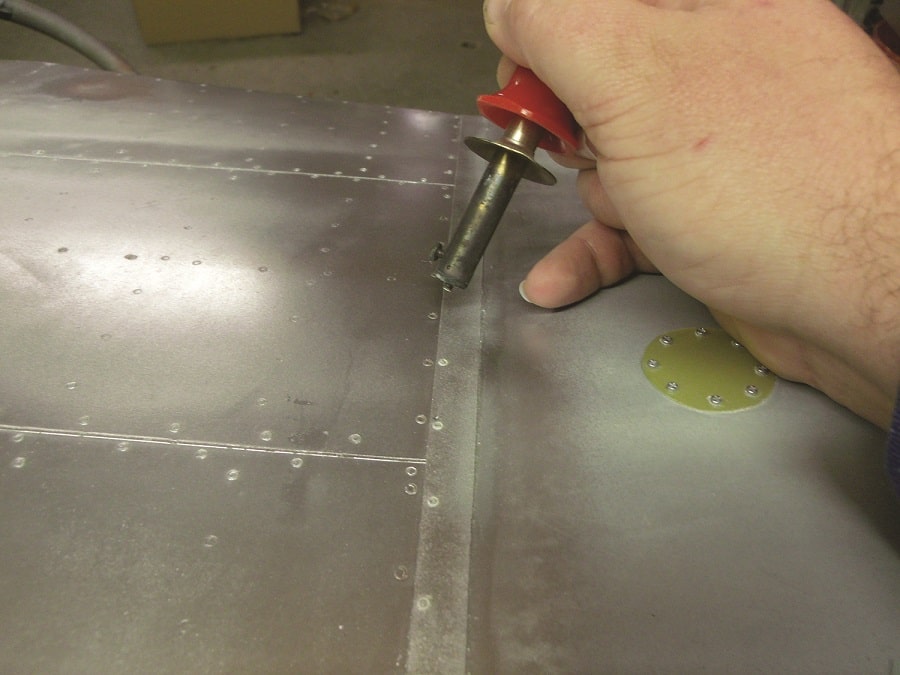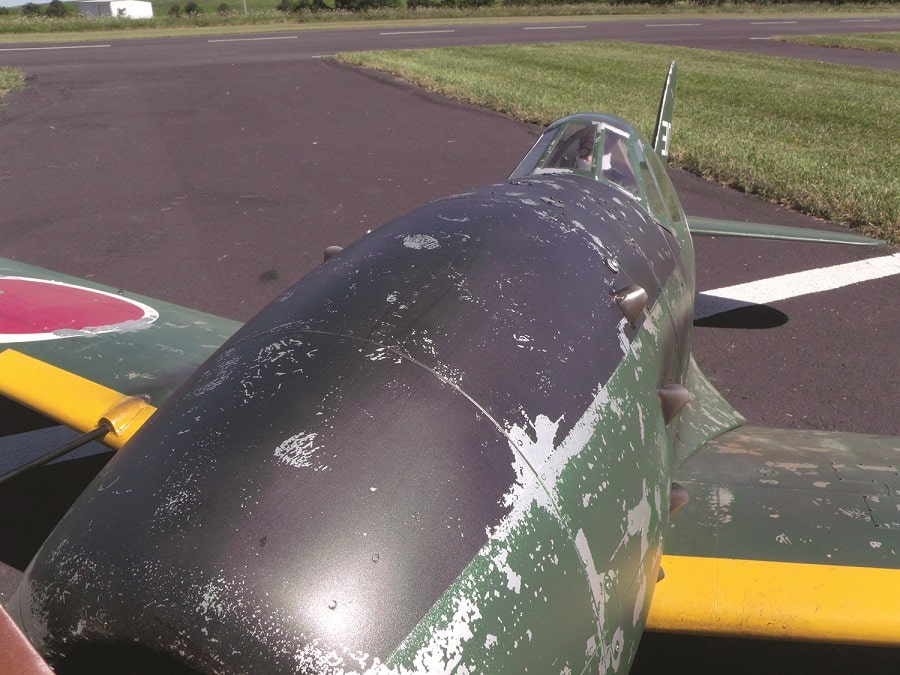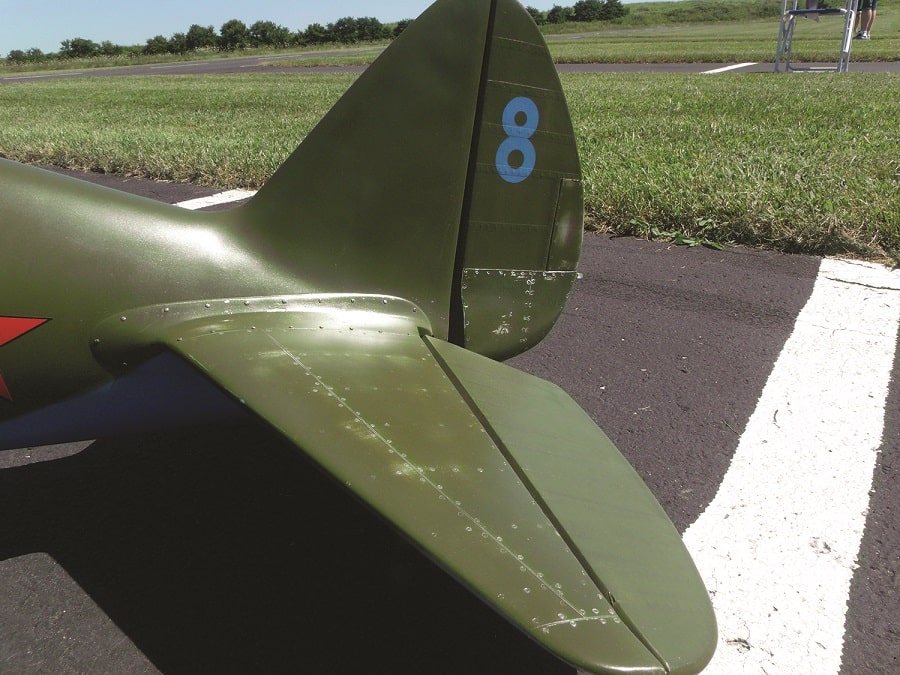
[ad_1]
I’ve all the time cherished airplanes. My curiosity has all the time been with scale RC fashions, notably warbirds. It wasn’t lengthy after I began constructing and flying RC warbirds that I used to be drawn to scale competitors. Whereas I used to be competing, I began measuring my work towards different modelers and buddies, and over time, I realized strategies to perform that “actual” look. There are a lot of ARFs available on the market in the present day that make nice beginning factors for producing competition-worthy planes. The fashions proven on this article are my MiG-3 and Mitsubishi J2M Raiden (Thunderbolt), each constructed from the ESM ARFs (sadly, they’re longer out there). Being a bit out of the strange, these planes aren’t modeled fairly often—all the time factor for scale competitors. This text highlights a number of the ways in which I’ve realized to reinforce the seems of your common scale mannequin.
DO YOUR HOMEWORK
First, do your analysis. One of the vital essential elements of detailing a mannequin is to match the general look of the full-size plane. Additionally, it’s straightforward to “over climate” a mannequin, so the important thing factor to bear in mind is to be delicate. Take the time to find out how the true plane was manufactured and with what supplies. Plane with metallic skins put on a lot in a different way than airplanes with surfaces coated with material and material. An fascinating facet of the MiG-3 is that solely a portion of its fuselage has metallic pores and skin. The areas behind the cockpit and the outer wing panels have been coated with laminated wooden. These wooden areas on the full-size aircraft have been barren of floor element—no rivets and panel traces for grime to gather on—so this is a crucial a part of getting the mannequin to look proper.
Make sure you have in mind precisely how and the place the full-size aircraft was flown, crushed, and abused. A Pacific Theater fighter, like a Corsair or Hellcat that operated from an plane provider and was subjected to salt water, will climate a lot in a different way than a P-47 Thunderbolt working from the English countryside amid a variety of mud and dust. An fascinating ingredient that I realized throughout my analysis was that almost all Japanese plane have been completed with horrible paint, and thus, after just a few flights, the paint would begin to peel and flake off. This left naked metallic uncovered with jagged shards of paint lacking. When you perceive the background of your topic plane, you can begin including the suitable kind of weathering and detailing.
PANEL LINES
Probably the greatest methods so as to add floor element is so as to add panel traces. There are a number of methods to do that. If in case you have a mannequin that’s coated in a movie and don’t want to cowl it in fiberglass material, merely tape off totally different areas alongside apparent panel-line areas, then airbrush a light-weight shading towards the tape; a light-weight coat will do. Utilizing a paint closely diluted with black, adopted by a rust colour, creates impact. If you pull off the tape, the separation line between the bottom colour and the shading does a pleasant job simulating each the panel line and a little bit of soot buildup.
If in case you have a fiberglass mannequin, like those on this article, you should use tape in the identical method after which construct up some hardware-store spray primer alongside the sting of the tape. Apply a number of coats, then let it dry. Flippantly wet-sand with 400-grit sandpaper—simply sufficient to show the tape. Pull the tape again, and also you’ll have an exquisite overlapped panel line. Skinny, 1/32-inch-wide chart tape can be used. For those who spray over the tape and sand, it leaves a buildup on both facet of the tape, producing skinny panel traces that reproduce the look of panels butted up towards one another to kind a flush seam.
RAISED RIVETS
Raised, or “brazier-head” rivets have been used on early plane, and to cut back air drag, they have been changed with flush rivets. I’ve discovered that the most effective software to make raised rivets is to make use of a syringe (out there from any drugstore) stuffed with Zap Method 560 Cover. Merely apply the rivets with the syringe one dot of glue at a time. Use some cheap masking tape, and draw traces to evenly house the rivets; apply the drops of glue utilizing the tape markings as a information. It doesn’t take a lot time to excellent the strategy. And since the glue is water-based, you should use a sponge and a few water to wipe it away when you mess up right here or there.
FLUSH RIVETS
Rivets are different nice eye-catchers that don’t take lengthy to use. For flush rivets, you’ll want to make use of a cheap soldering iron, which you will get from a reduction retailer. I spent $4 for one at Harbor Freight Instruments, and it really works completely. Use one with a removable head, and insert a size of brass tube that’s the similar diameter because the rivets you wish to simulate. Use a pencil to attract a tenet for the rivet placement; as soon as the brass tube has heated up, go alongside the road and burn the rivets into the aircraft’s floor. Making use of flush rivets whereas the aircraft continues to be in primer works finest. You don’t have to carry the iron in place for lengthy; all you wish to do is soften the primer coat. Observe: Don’t do this with a film-covered airplane.
HATCHES
Upkeep hatches are one other nice element so as to add to your airplane. I take advantage of skinny G-10 fiberglass sheets out there from FTE (franktiano.com). You may simply reduce G-10 to any size and form with a pointy pair of scissors. G-10 doesn’t bubble or shrink within the solar, like skinny styrene plastic can; you merely glue it in place. Some additional element could be added by putting in small #0 screws alongside the perimeters of the panels for a pleasant 3D impact. Hatches can be shortly utilized utilizing aluminum- heater duct tape, which is simple to chop to measurement. Simply peel off the backing, and stick it in place. Use a smoothing instrument (like an previous propeller blade) to burnish it into place.
PAINTING
When you have got all of the panel traces, rivets, and hatches utilized, it’s time to color. And it’s the software of the paint that helps make these particulars stand out. For worn-out, weathered warbirds, cheap paint is ok, however for the most effective outcomes, I desire to make use of Tamiya spray paints. Apply a flat aluminum paint for the bottom coat. As soon as it has dried, scuff it up evenly with some 0000 metal wool, then apply the end paint.
After your paint has dried, use some 000 metal wool and rub the paint down. Use horizontal strokes to match the airflow over the wing and vertical strokes over the fuselage. Use some soapy water with this, as effectively. After a number of strokes, you’ll begin to discover the silver undercoat coming by way of. This impact is prevalent round hatches and alongside panel traces as they’re raised and the paint in these areas will get eliminated first. Mess around with this system, however take it straightforward to only carry out the small print in your aircraft.
To provide the closely chipped look of the Japanese Raiden, I merely apply some tape because the paint simply begins to dry after which instantly pull the tape off onerous. Among the paint will come off and produce a jagged, flaked-off look. That is additionally an amazing method to make use of on the main edges and different high-wear areas, like the perimeters of the cover of most plane.
PROPER PROPS
At contests, I typically see good fashions with a horrible-looking wooden flying propeller caught on its nostril. This ruins that scale look. Perform a little analysis, and paint your propeller to match the full-size airplane’s prop. With the MiG-3, I discovered the colour scheme that I wanted and easily painted a Falcon sport prop. This makes the aircraft stand out and improves its genuine look. For those who don’t wish to go to the difficulty of portray your flying prop, then exit and purchase a Xoar World Warfare II–model prop. It comes proper out of the bundle painted black with yellow suggestions. It seems a lot better than a inventory picket sport prop, and it offers wonderful flight efficiency.
BOTTOM LINE
There are a lot of alternative ways to spruce up your scale mannequin, and these strategies are simply a number of the fundamentals. Anybody can add element to enhance the mannequin’s scale look. With a little bit effort, you may flip your ARF warbird right into a great-looking, competition-ready aircraft. Don’t be scared to strive, and by no means inform your self which you can’t do it. It simply takes a little bit time and a willingness to be taught one thing new.

Right here, you may see skinny chart tape utilized to the place the panel traces will probably be. They’ve been sprayed over with a couple of coats of primer to construct up the floor.

After sanding evenly, the tape is eliminated to go away the skinny panel-line particulars.

Right here you see the panel traces and rivets added to the wing heart part. The sort of detailing is a good way so as to add floor realism to your mannequin.

To provide flush rivet element, first prime your mannequin after which use a soldering iron with a small brass tube inserted into the top. You may then burn the spherical rings into the primer to signify the heads of the rivets.

Right here, you may see some recent raised rivets utilized utilizing Zap Method 560 Cover Glue. After the glue has dried, the floor could be painted.

One other means so as to add to the floor element is so as to add hatch covers. Skinny G-10 fiberglass works effectively.

Aluminum-heater duct tape burnished down onto the mannequin makes a wonderful hatch. A number of tiny screws add to the impact.

After portray your mannequin, use some metal wool and a few window cleaner (to moist the floor), rubbing within the route of the airflow.

After some time, the rubbing will begin to carry out the silver undercoat. Go gradual, and be delicate.

Sure, you need to have a Japanese pilot in a Japanese fighter. (Take a look at the chipped paint alongside the cover framings!)

Though not coated on this article, some detailing contained in the cockpit goes a great distance to enhance the mannequin’s look.

You wish to carry your chipping and put on onto the cover framing.

Removed from being delicate, the heavy paint chipping on the J2M Raiden ought to be finished at areas of elevated put on, corresponding to on the main edges of the wing and beneath the cover. The mixture of chipped paint and panel traces creates a variety of eye-candy with out a lot effort.

Right here you see the heavy chipping and peeling goes into the wing insignia as effectively.

Different additions to extend realism are exhaust streaks and machine-gun blast residue on the wing. Begin delicate, as too little is a lot better than an excessive amount of.

And don’t overlook to climate the metallic panels on the tail surfaces.

And right here’s a remaining makeover tip: Every time potential, make sure to disguise your radio switches and different RC {hardware} in order to not spoil all of your weathering efforts on the outer floor.

And right here’s a remaining makeover tip: Every time potential, make sure to disguise your radio switches and different RC {hardware} in order to not spoil all of your weathering efforts on the outer floor.


By P. J. Ash | Pictures By David Hart & P. J. Ash
[ad_2]